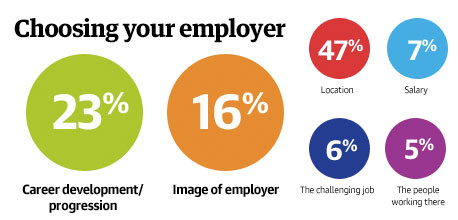Recruitment is a massive challenge across the globe, but especially in Ireland – unemployment is now at its lowest in 13 years, 4.8%. Workers are mobile, untied to their current employers & on the move – on the hunt for new beginnings & renewal.
In this uncertain climate, businesses are in need to keep a 2020 vision on their recruitment outlook; to keep an eye on the challenges the year might bring for talent retention, to see where the organisation could be losing valuable skills.
Use this year of new beginnings & master your recruitment – make 2020 a success.
Ireland’s Top Hiring Challenges
Recruitment is a lengthy process, both for the candidate and the HR team. Sifting through CVs, organising interviews and drafting offer letters, this costly, time-consuming part of any business brings with it a multitude of challenges:
Hiring takes too long - in this market of low unemployment, talent is snatched up quickly. Over-complicated, lengthy recruitment processes that exist within various sectors across Ireland can put candidates off, leading businesses to lose out to competitors.
Cost of living is too high - Dublin now costs more to live in than London, Vienna or Vancouver. For the rest of Ireland, the cost living could be set to rise by up to €1,300 if a Hard Brexit were to take place. With the availability of talent in Ireland at its lowest since the Celtic Tiger, businesses are being forced to seek skills abroad. The cost of living will only hamper this search.
A lack of talent retention costs - the expense & time of hiring is only half the battle. When a business loses a professional, the HR team must begin the battle again, costing your organisation time & creating further expenses incurred from this loss of talent.
Master Recruitment in 2020
So, 2020 is all about a year of renewal and new beginnings. Here’s how you can take a renewed approach, master recruitment and make the year an HR success:
- Invest in HR & Strategy
Consider the time of year and the periods that are heavily recruitment-driven - does it suit your business better to recruit during short, concentrated bursts, or would it be more beneficial for your HR team to recruit continually throughout the year?
Recruitment marketing, especially online, is one of the largest growing sub-sectors as we move towards 2020. Is your organisation relying solely on its HR team to find your talent? Why not get your marketing staff involved, working together with HR to promote your job roles further and to help attract a larger pool of talent?
- Invest in Talent Retention
Take talent retention as seriously as your recruitment - deal with existing employee issues swiftly to keep job satisfaction and morale at a high and staff turnover to a low.
Ireland’s cost of living - whether you like it or not, your business alone won’t be able to do much to change this overnight. But there are measures you can have in place to make life easier for your current staff and aid your HR team in their battle to find you the right talent.
If you are city-based, the cost of living is more likely a bigger issue for you than your rural counterparts. Consider introducing flexible, remote working for employees, providing them the option to avoid the commute during parts of the week. If you have the budget, why not weigh up the benefits of investing in a rural hot-desking hub if a large section of your employees are concentrated in certain areas. To offset the negatives of a high cost of living, integrate better working benefits into employee contracts - this could attract talent to take a chance on the cost of living and showcase your willingness to invest in staff in the long-term.
2020: A Year of Success
During this year of renewal, your business has the prime opportunity to take a renewed approach to success. Mastering recruitment will help you to make a start on your path of success, ensuring you attract the right talent and then make them feel valued to retain them afterwards.





 RSS Feed
RSS Feed